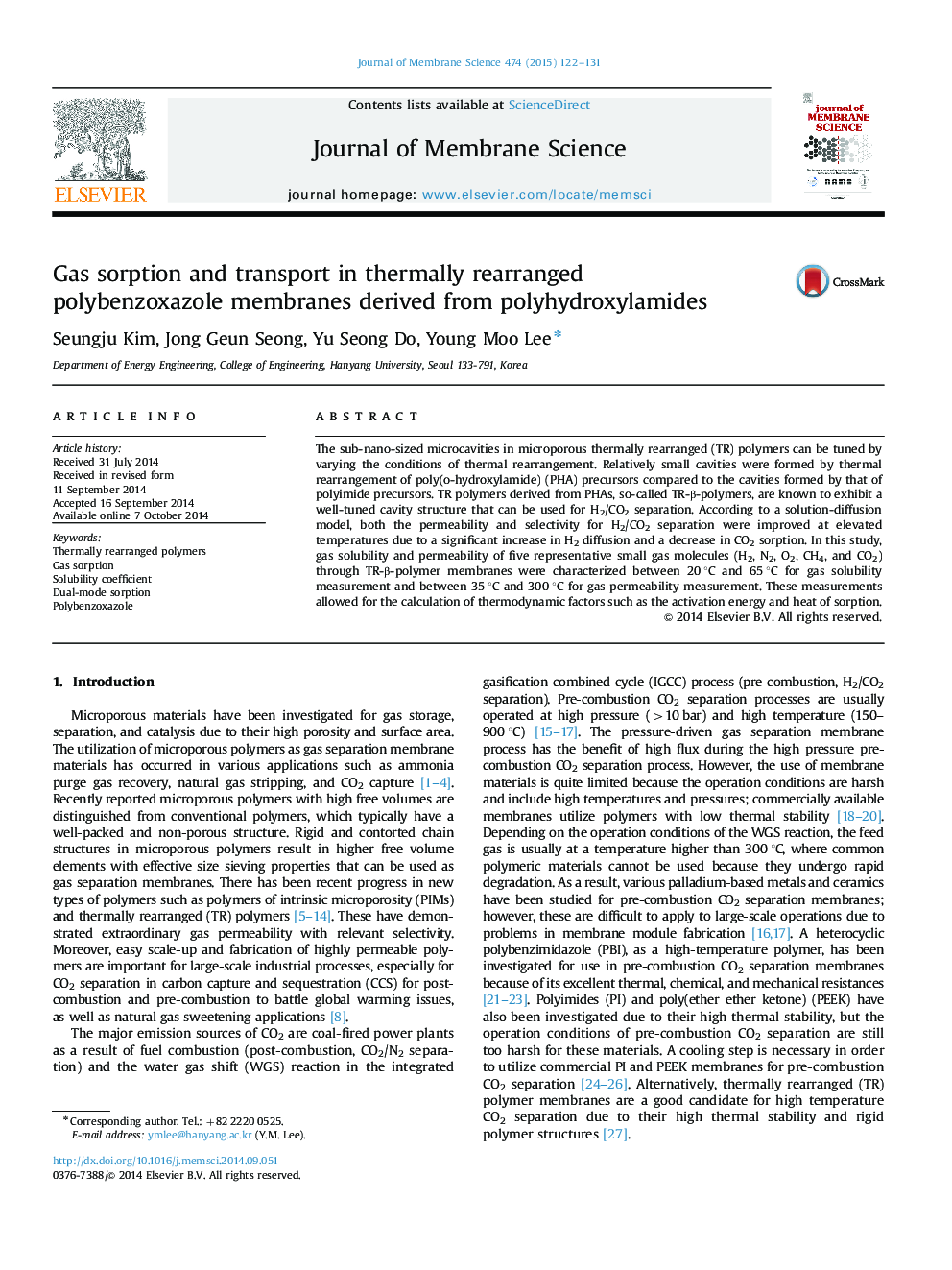| Article ID | Journal | Published Year | Pages | File Type |
|---|---|---|---|---|
| 633279 | Journal of Membrane Science | 2015 | 10 Pages |
•TR polymers derived from PHAs were investigated for H2/CO2 separation.•TR process allows a great increase in diffusivity and small increase in solubility.•Gas permeability increased and solubility decreased at the elevated temperature.•H2/CO2 separation performance was improved at the elevated temperature.
The sub-nano-sized microcavities in microporous thermally rearranged (TR) polymers can be tuned by varying the conditions of thermal rearrangement. Relatively small cavities were formed by thermal rearrangement of poly(o-hydroxylamide) (PHA) precursors compared to the cavities formed by that of polyimide precursors. TR polymers derived from PHAs, so-called TR-β-polymers, are known to exhibit a well-tuned cavity structure that can be used for H2/CO2 separation. According to a solution-diffusion model, both the permeability and selectivity for H2/CO2 separation were improved at elevated temperatures due to a significant increase in H2 diffusion and a decrease in CO2 sorption. In this study, gas solubility and permeability of five representative small gas molecules (H2, N2, O2, CH4, and CO2) through TR-β-polymer membranes were characterized between 20 °C and 65 °C for gas solubility measurement and between 35 °C and 300 °C for gas permeability measurement. These measurements allowed for the calculation of thermodynamic factors such as the activation energy and heat of sorption.
Graphical abstract(a) Polymer structure of precursors and TR-β-PBOs. (b) Solubility coefficients of precursors and TR-β-polymers as a function of critical temperature of small gas molecules measured at 1 bar, 35 °C. Figure optionsDownload full-size imageDownload high-quality image (157 K)Download as PowerPoint slide
